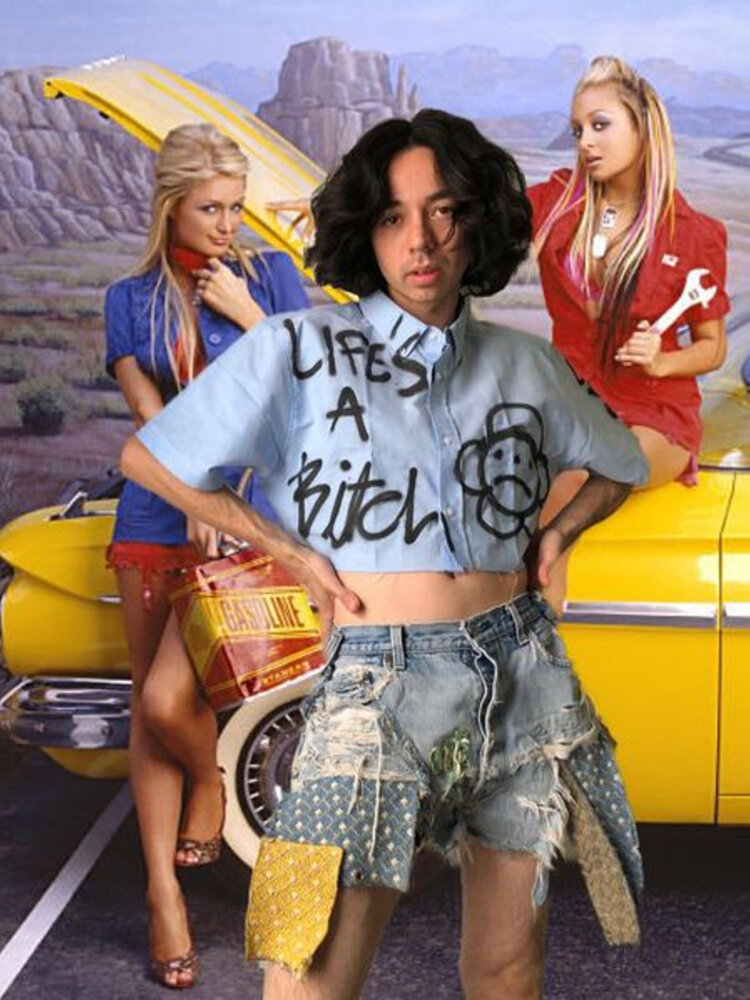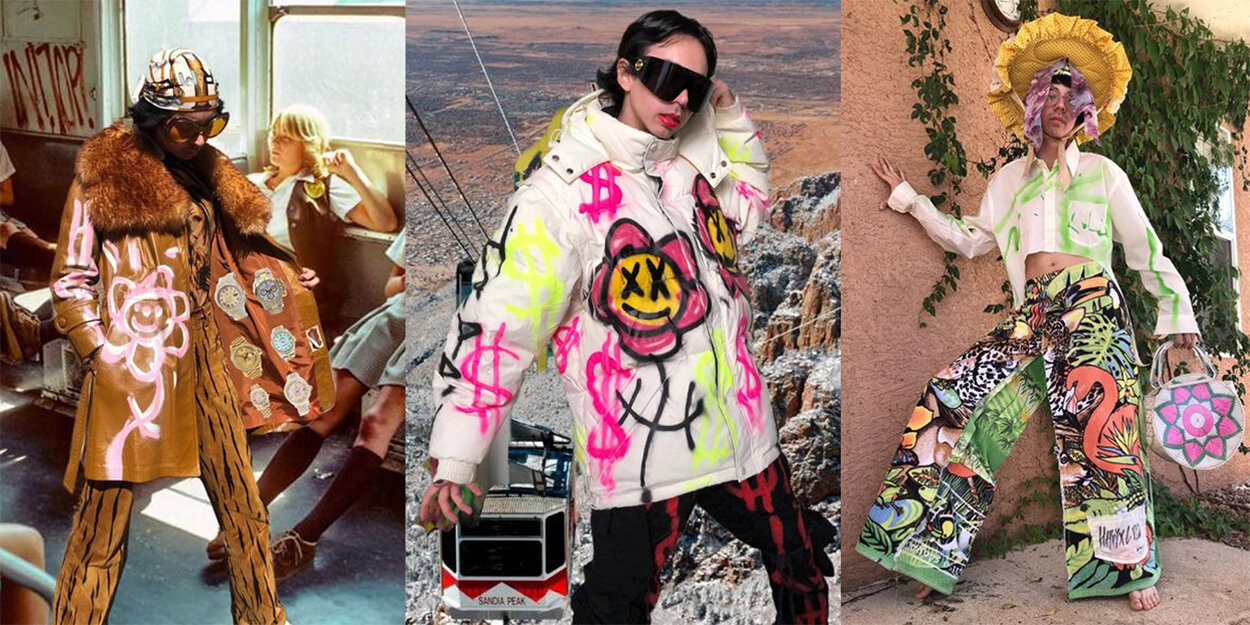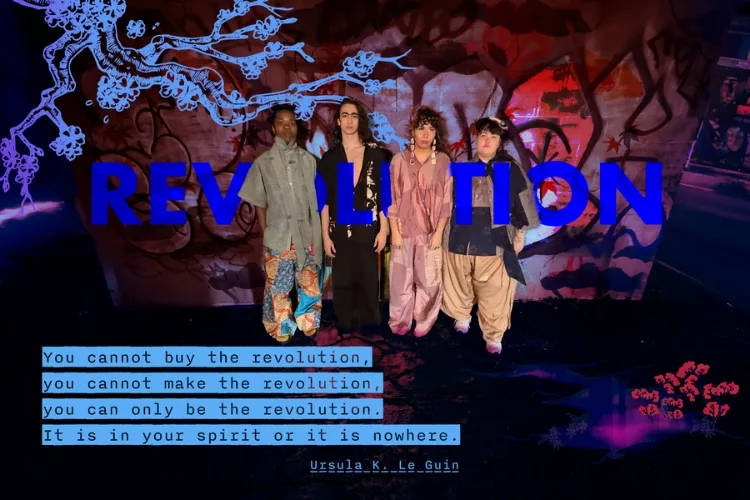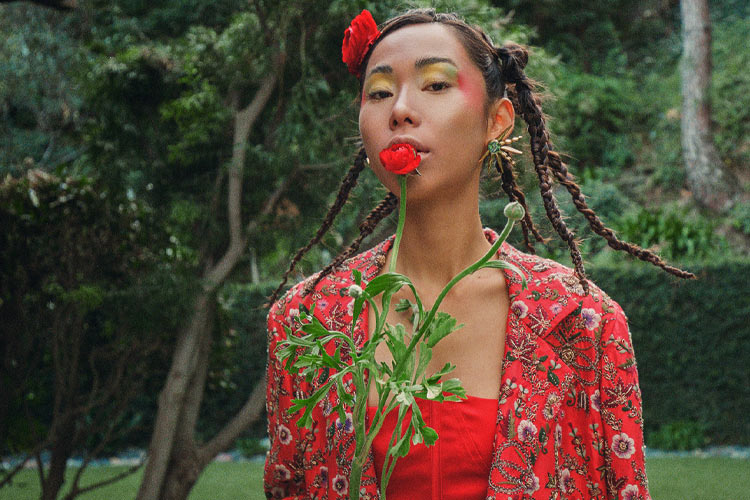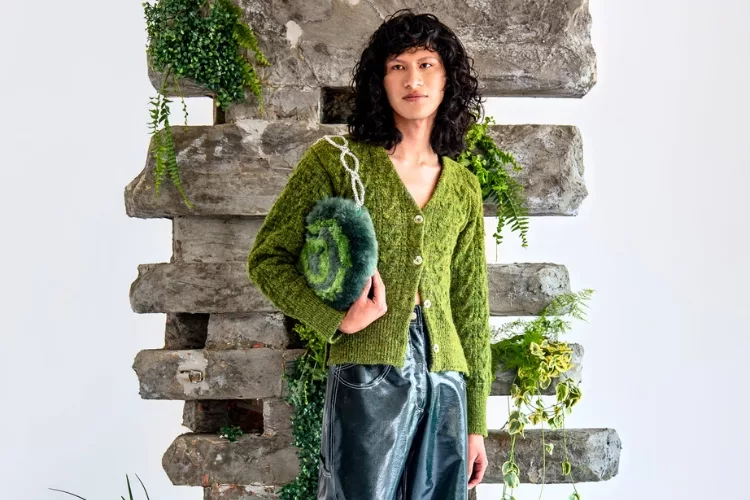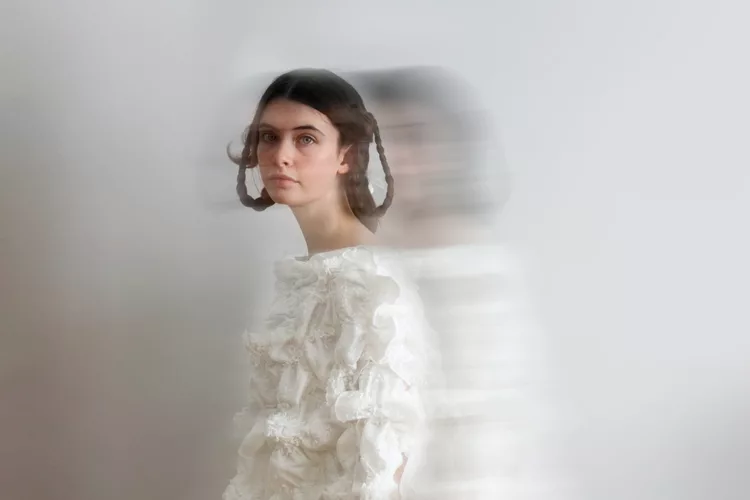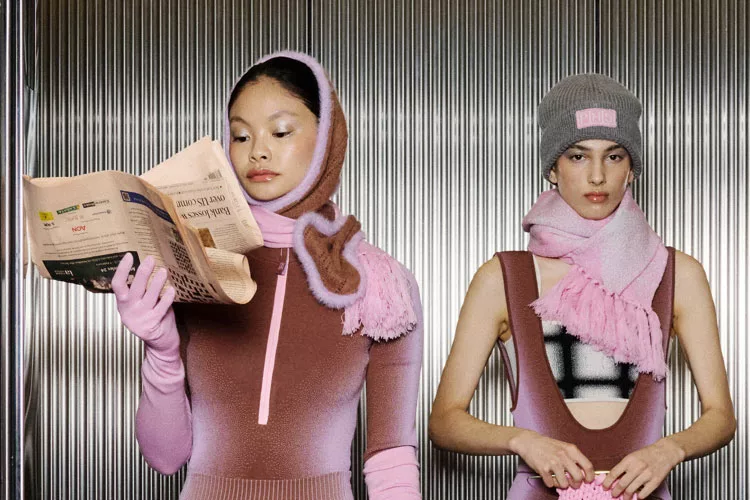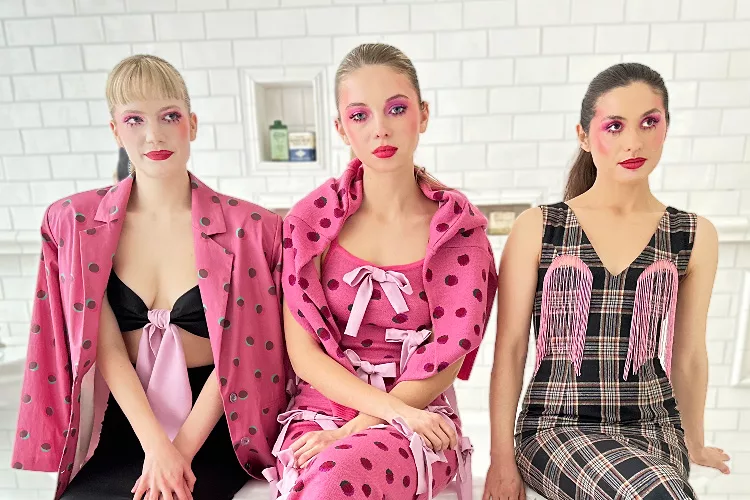happyxloco
I’m from New Mexico and back in my hometown Albuquerque my skate friends and I call each other “loco”. I then started doing graffiti before fashion and I would write “Be happy” on the walls because I wanted to spread a message that could uplift people.
We’ve talked with so many emerging fashion designers graduating from different design schools – Fashion Institute of Technology, Central Saint Martins, Parsons, Pratt Institute and so on. And why not? We expect the next Marc Jacobs or Jeremy Scott to come from the same places that have produced so many great creative talents in fashion.
Yet this is also one of the many gatekeepers in the fashion industry – the unwritten rule that attending a “name brand” fashion school is needed to get the connections that lead to internships that lead to jobs within the industry. While there is nothing wrong with students proving themselves eligible for such prestigious schools, the higher cost of these institutions means people from lower socio-economic backgrounds can’t get their foot in, let alone an equal chance of getting noticed in the industry.
But Jeremy Salazar, the multi-hyphenate creative and founder of HAPPYXLOCO, an online clothing store that has amassed a following of over 12k on Depop, has managed to be successful his way. He started out mending his own skateboard trousers because he couldn’t afford more when he was a kid, and now he’s selling to people around the globe street cred fashion made completely out of the same materials – secondhand clothings. Jeremy boldly brings unconventional elements into his eclectic couture: his trademarked graffiti paint on every. single. piece of clothing, and his extensive use of unexpected materials like automotive supplies, are a few of the many things that have built the name for the young designer.
When I first looked at your profile, Jeremy, I was fascinated with your vast abilities: film – photography – fashion design – and how you identify yourself as the “epitome of creativity”. Are you now focusing on one form of art only or are you experimenting and developing everything?Thanks so much, Jacqueline. I would say I’m experimenting and using those different forms of art and creativity to tell my story. I can communicate my ideas and see the most impact by having people wear the clothing I make. So I’m mostly invested in fashion right now. That’s what I’m cultivating.
What got you into fashion?
I’ve never thought about doing fashion as a kid.
I’m a skateboarder and it destroys your clothes. My pants would always rip apart and I couldn’t afford new ones. So I taught myself how to sew and patch them back together by hand. And when people saw my skating pants, they loved them and asked where I got them from and wanted to buy them. I never thought of them as being fashionable.
different creations by Jeremy Salzer /HAPPYXLOCO
When I was a young teen I was inspired by skating brands like Nike SB and Spitfire logos and wanted to wear them so the kids at my school would know I was a skater. I really liked the artwork.
What is the meaning behind the name HAPPYXLOCO?
I’m from New Mexico and back in my hometown Albuquerque my skate friends and I call each other “loco”. That’s how we grew up together. I then started doing graffiti before fashion and I would write “Be happy” on the walls because I wanted to spread a message that could uplift people.
So I decided to create an anonymous instagram to share those street tags. I thought “Why not just call it happy loco?” It was a way to embrace who I was in the past and the person I’m becoming.
Wow, didn’t expect that. Really shouldn’t judge a book by its cover. My first impression of HAPPYXLOCO was nowhere near the message you’ve just told me. Because you have a line called Life’s a Bitch, and also your symbol – the flower with X eyes – does not seem to translate to something so bright and youthful. Why the flower symbol?
The idea of putting that flower just came to me out of nowhere. I’ve always been drawn towards flowers, especially sunflowers. When I draw the X eyes It’s a reflection of how I see the world around me. I feel like I’m watching the planet and humanity disintegrate right before my eyes. They’re like my subliminal messages about a dying species and earth that engage with the streets.
I think we can all agree that Graffiti and skating is the cornerstone of how you approach fashion. But is there any fashion designer that has the most influence on your designs?
Oh there are so many. I appreciate Martin Margiela’s approach – I like how he didn’t show his face and also left the industry at his peak. I look up to Rick Owens, Yohji, Rei Kawakubo, and McQueen. I’m intrigued by the Japanese harajuku styles.
And I really like KidSuper. The designer behind KidSuper is Colm Dillane and he inspired me when I first started. He was the first person I saw painting on clothing and selling them. He was one of the winners of year’s LVMH Karl Lagerfield prize and started off selling t-shirts in his school cafeteria.
I think I and your fans love the level of creativity in each of your designs. You cut a top out of Converse shoes. You source originally high-end items like those from Gucci, Dior, then they are all sprayed on, almost in a destructive way. Is there an intended message behind how you treat fashion design?
Thank you. Maybe there is only one, if any, to just freely express yourself.
So mostly everything is spray painted. What if you messed up, Jeremy?
I rarely make mistakes but every once in a while I do. Examples would be when I spell words. Sometimes I just get carried away and spell them wrong. But then I just let it be and figure how to make it work. So my strategy is to figure out what’s gonna work even when I have messed up.
You’re one unconventional designer. Normally the usual career trajectory for a fashion designer is to attend a fashion school, get a few internships, then start their own brand. But you are a self taught fashion designer. So I’m curious: what does your design process look like from beginning to end?
Thank you – and yes I am self-taught. I didn’t have the educational opportunities to attend fashion school or college. For my design process I source the materials at thrift stores and warehouses in the local area. I first look in the areas opposite of where the clothes are like kitchenware, automotive and bedding stuff to see what can be turned into clothes.
And after that I will go through all the secondhand clothes. I’m very particular about what goes in my collection. I walk around, touch it, feel it, see how the material may fit on a body before taking it home. I spend hours building the ideas on the spot and sometimes leave empty handed just because I’m so picky. Once I get that done I take it to my bedroom and figure out the best approach to what I find, whether I start cutting up and sewing, painting or both.
I really admire how strong you are to keep pursuing your passion despite a lot of hardship. You also share the difficult reasons that pushed you to work towards leaving your hometown. What are the most challenging parts about moving to New York City from New Mexico?
The fashion and queer lifestyle as an expression still feels fresh in New Mexico. So standing out in that sense has become dangerous for me. People are not comfortable seeing me like this or can be obsessive in very uncomfortable and threatening ways. The appreciation for queer culture and fashion are not as developed or even exist where I was born. I’m easily recognized because of my image and have even been physically attacked at my own shows by my own peers I grew up with. And have had people stalk me while shouting my name, and even make in person threats to kill me. So it’s hard to focus on building my business when I can’t be as available to my community and have to solely rely on my brand online to save up and move.
The most challenging part will definitely be maintaining my business so that I can survive in New York City. I feel more accepted and can focus more on fashion when I’m out there but rent is more expensive. So now I am back to my hometown working towards my goal of living in NYC. And I know I’m going in the right direction. It’s just taking quite some time to get there.
That’s a lot you had to go through. Well, now you have 12,000 followers on Depop – that’s something to boast about, especially now Depop is blowing up and people are thrifting more than ever. Tell us about when you first started out on Depop – those beginning days of HAPPYXLOCO, was that like, 3 years ago?
Yes, about 3 years ago. When I looked into Depop I saw how fun and cool everyone looked. I knew it was where I had to be. Back then when I first started out I didn’t think how far I could go. I just put my clothes up for fun and people eventually started taking interest and buying. Which also got me recognition from the Depop team and has helped grow my brand to reach people all around the world. I’m really happy about it.
What did you do to get people to know about your brand? Was social media the main medium to promote your brand?
Yeah, I have to go all in on social media because that’s the main outlet to the world. I post most of my work on instagram, depop and now tiktok. I would also say word of mouth too.That feels the most authentic and organic. And occasionally through street art.
What are the demographics of your customers?
It’s such a variety. The demographics of people who like my stuff were quite surprising at first, to be honest. All ages and styles. The people who buy HAPPYXLOCO tend to be those who are into thrift culture, but also want to collect something more unique and out of the ordinary. I ship to people all over the US and lots of international sales from places like Canada, the UK, Germany, Australia, New Zealand, Norway and Japan to name a few. It’s always a shock to me wherever in the world my designs end up because they were just being made out of my little bedroom on my floor.
Do you plan on scaling up and having a team?
Yes, I totally do. Right now I am doing everything, from sourcing materials, designing and creating, photography, video production and social media management. I love learning a little bit about everything – but definitely want to have people to help me because the hours I work are quite strenuous. All day, all night haha.
And I also want to have more time for myself to learn more about fashion. I would like to take an internship to learn more conventional fashion business models and creating styles. So I can better apply to my brand rather than learning on my own so much. I have never attended college and been living a free spirited life and it does not look good on the resume so work and stuff like that becomes difficult to find. But I’m serious about it and really want to grow my vision.
As a brand I would want to produce on a larger scale if the demand got there, and would aim to create from more deadstock materials to accommodate duplicates in every size.
Will trends become less important in the future?
Yes and no. With social media trends are changing and consumed so fast. I’m not a big trend forecast type of person. So I’d say trends are becoming more of a mindset on how your style engages and impacts the world around you. Trends can be tools if you want to use them as a way to draw in the masses and mix in your statements to stir up change.
Thank you, Jeremy for such an inspiring conversation about your path to becoming a fashion designer well loved by the Depop and thrift culture communities. We wish you the best on your upcoming journey and look forward to seeing what you will achieve with your brand HAPPYXLOCO!
Follow Jeremy on: Instagram: @happyxloco. Depop: @happyxloco Tiktok: @happyxloco

